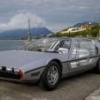- Moving the firewall back.
- Moving the steering rack forward.
- Moving the timing belt tensioner to the other (loose) side of the belt.
- Redoing the water pump to still pump water, or using an external water pump.
- Redoing the oil pump (it's currently a dry sump, so no big deal).
- It's a DOHC V6 with a 1-2-3-4-5-6 firing order, so I think the cams will work in reverse.
- Redoing the crank and the cam timing sensors.
- What about the starter? Does it have some kind of thing that would prevent it from operating in reverse, like some one-way over-running or retraction mechanism??
- Replace the alternator.
- Replace the power steering pump.
- A/C pump (sorry, I just reinstalled it and I want to keep it working).
- Making sure the tranny gets the right lubrication in reverse.
- Do any engine lubricating things need to be changed?? I think the piston oil squirters should still work and all the slide bearing are symmetrical.
- Anything else that I haven't thought of?
Edited by Supercar, 16 August 2009 - 23:40.





















